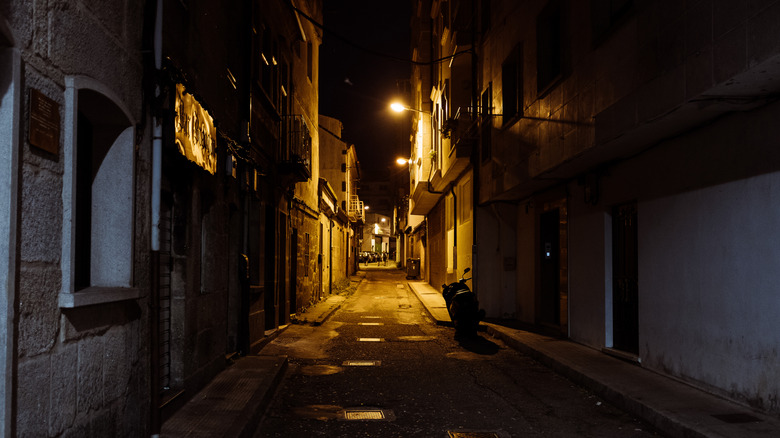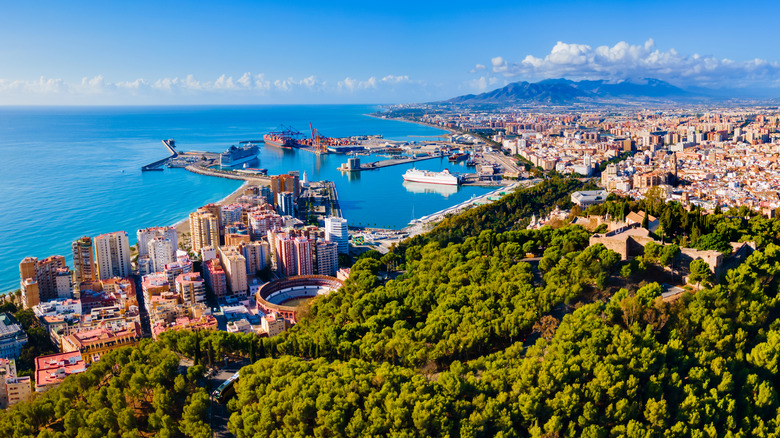Tourists Should Avoid This Dangerous Area When Visiting Spain's Costa Del Sol
Spain has long been one of the world's premier travel destinations, drawing visitors keen to soak up its rich history, alluring culture, delectable cuisine, and laid back Mediterranean vibes. And while this European gem has no shortage of beaches — as found in this underrated town with golden sands and medieval towers — the Costa del Sol has long been a magnet for those who wish to lose themselves amidst its sun-splashed splendor.
With 93-miles of idyllic seashore, the Costa del Sol occupies a special place in the dreams of holidaymakers, and the 325 days of sunshine it enjoys ever year earns each letter of its nickname. The region's main settlement is Málaga, a bustling, historic port city that is the second biggest-town in Andalusia. While it's generally safe for tourists — like this breathtaking French Alps city that has become one of the nation's most dangerous — Málaga also sees its fair share of crime. There are parts of town where travelers should exercise caution, so it pays to educate yourself before you go.
Do your best to steer clear of the sketchy part of town
Málaga holds a special place in Spain's collective imagination. Not only is it famous for its beautiful beaches and the old Moorish fortress known as La Alcazaba, but it's also the birthplace of famed artist Pablo Picasso (and home to a museum bearing his name). While the city enjoys a very low crime rate by European standards, there are still a few neighborhoods that — while not no-go zones — are known for drug activity and petty crime.
Chief among Málaga's sketchy parts of town is Palma-Palmilla, also known as District 5. Situated along the west bank of the Guadalmedina River that runs through the city, a lot of public housing was constructed in Palma-Palmilla in the 1960s. The expansive neighborhood is home to the Estadio de Rosaleda (the home field of the Málaga FC soccer team) as well as the Diario Sur newspaper. Unfortunately, District 5 is also known for having one of the highest crime rates in all of Málaga.
While Palma-Palmilla does enjoy an unsavory reputation, you'll generally be okay if you exercise a bit of common sense (don't involve yourself with drugs or any other illegal activities), and do your best to avoid the neighborhood's unlit alleys and side streets after dark. If you do travel there — perhaps to enjoy a soccer game or check out one of the district's parks such as Las Virreinas — just show respect to the locals, don't flash money, and leave your expensive watches and jewelry in the hotel safe.
Explore one of southern Spain's coastal gems
Even though Málaga deals with some of the ills that affect other parts of Europe (drug dealing, pickpockets), it's by and large a very safe city with not just a steady stream of international visitors, but also one of Spain's most robust economies. Its perfect coastal location makes it well worth exploring.
While you're in town, make sure to dive into a bit of its Moorish history with a visit to the Alcazaba fortress — which dates back to the 11th century — along with the city's iconic cathedral, whose construction began in 1487. You also can't visit Málaga without paying respects to its favorite son at the Pablo Picasso Museum, which houses over 200 of his original works.
For great food and deep local flavor, head to the Mercado Central de Atarazanas, which is not only an architectural triumph, but also offers up fresh fruits, vegetables, meat, cheeses, and other products, along with stalls selling ready-to-eat dishes at prices that can't be matched anywhere else in town. And when it comes time to chill out on the water, Playa de Malagueta is Málaga's most iconic stretch of sand, featuring sunny Mediterranean wonder just ten minutes from the city center. For more of southern Spain's goodness, check out this undiscovered beauty of a town.


